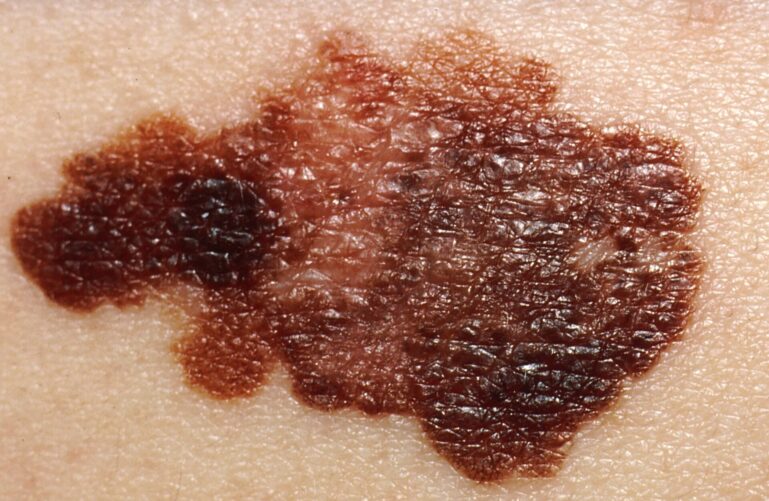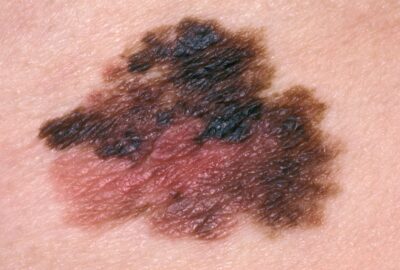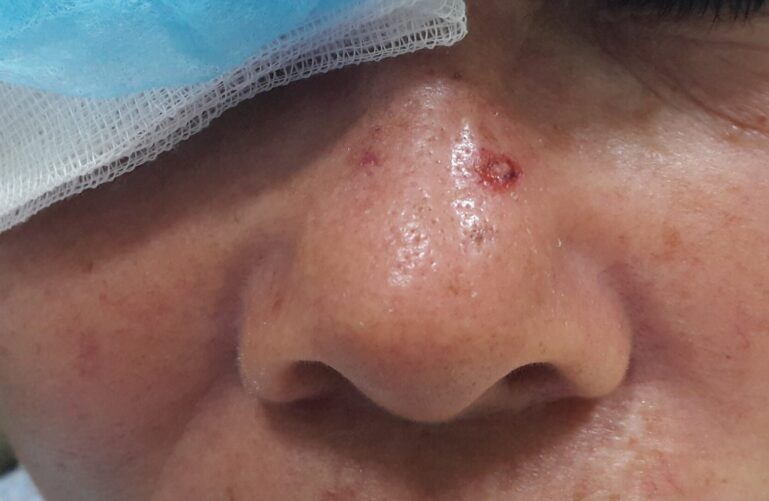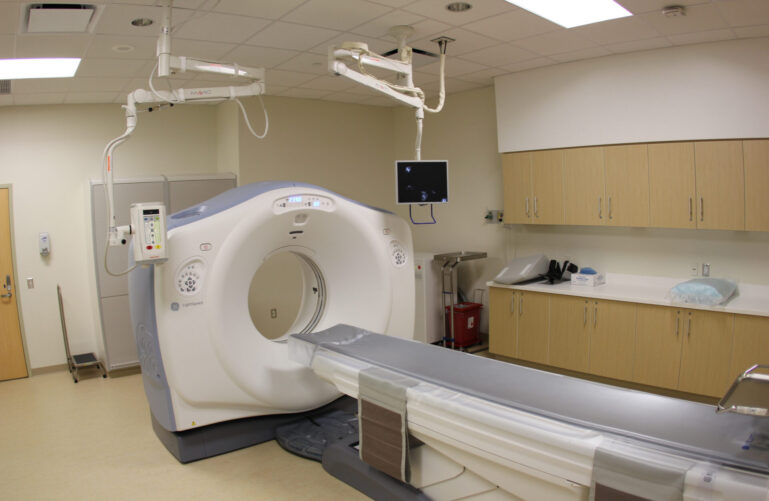2 Horrific Energy Sources That Can Cause Cancers
Solar power has been harnessed to generate power by man for many decades and it has revolutionized to be the newest renewable energy source of the future. Though invisible there are horrific energy sources within it that can cause cancers by being ignorant and neglect. The invisible form of energy which is known as solar radiation can harm by hitting the cell at the various cellular, biochemical and molecular level causing the cells to become cancer. Their effect could initiate carcinogenic transformation, but with a latency period, meaning that final cancer may appear as long as 6 decades later.
Solar radiation can be depicted schematically and classify into 4 broad categories according to their wavelength. The higher the frequency of the waves, liberate higher energy and become horrific energy sources that can cause cancers.
SOLAR RADIATION
Solar radiation is divided into 4 main areas depending on their wavelength and power. (See image below)
- Visible light
- Ultra Violet radiation (UV radiation)
- Ionizing radiation (X rays, gamma rays
- Infrared radiation (Radio frequency and Electromagnetic waves)
Q: Can cooking and heating food in a microwave oven cause cancer?
Q: Do wireless communication devices and mobile phones cause cancer?

The visible light ranges from 400nm (nanometers) (Violet) to 750nm (Red) in wavelength which can be split into 7 colours (the rainbow) through a prism. Visible light is relatively harmless and do not damage the DNA sequence resulting in carcinogenic mutations.
ULTRAVIOLET (UV) RADIATION
UV radiation is divided into 3 main subtypes. The wavelength is lesser than the visible light and ranges from 100nm to 400nm. They are found outside the normal visible light range next to violet and are named ultraviolet. Shorter the wavelength, these are at a higher frequency and liberate more energy.
UV A 315nm – 400nm
UV B 280nm – 315nm
UV C 100nm – 280nm
Ultraviolet B (UV B) is important for humans as it helps to synthesise vitamin D in the skin. Also, UV B is used to treat certain skin diseases such as vitiligo, psoriasis and atophic dermatitis.
But it is unfortunate to understand that UV B can induce ‘sunburn’ on the skin and is identified as horrific energy sources that can cause cancers. UV B does damage the DNA sequence contributing to the development of skin cancers, cause immune suppression and oxidative stress at a molecular level. This entire process is known as photocarcinogenesis is complex and multistaged.
Humans most commonly get exposed naturally to UV B through solar radiation. Although the ozone layer in the stratosphere could absorb these nasty ultraviolet B rays, Australians and NewZealanders are vulnerable to get skin cancer due to the breach of this layer. UV B exposure is more at higher altitudes, through a thin cloudy sky and most fascinatingly could be exposed by reflected rays from buildings, snow or even from the sand. Sri Lanka becoming a developing country with many high rising buildings and concrete highways, therefore indirectly can increase the risk of skin cancers caused by UV B radiation in the future. Further, it is worthy to note that 80% of the UV radiation can reach the ground level and 10% of it could pass through windows. It has to be highlighted that the strength of the UV radiation is not directly correlated to the environmental temperature. Therefore it is advisable to avoid unnecessary exposure to the sun even on cooler days, use protective clothing, hats and in applying sunblock creams.
In addition, artificial applications through skin tanning devices, sun lamps, sunbeds, UV lamps used in certain industries, germicidal lamps etcetera can induce skin cancers. Ultraviolet A was considered safer and was used in the past for cosmetic tanning in various devices. But these are considered as Class 1 carcinogens by WHO at present and is banned in many countries.

Features of a melanoma
Asymmetry (lesion)
Borders (irregular)
Colour (Variegated)
Diameter (more than 6mm)
Evolving (with time)


WHAT ARE THE SKIN CANCERS THAT CAN GET WITH UV B EXPOSURE
Melanomas, as well as non-melanoma skin cancers, can be caused by UV B radiation exposure.
Melanoma, also known as malignant melanoma, is a pigmented skin lesion initiated in the pigmented cells (melanocytes) found within the deeper layers of the skin. Melanomas occur commonly among individuals with a lesser amount of skin pigments (Fair skin people) rather than on dark skins. UV B induces malignant transformation only in the skin rather than on other sites as rarely melanomas could occur in the mucus membranes which are found in the oral cavity, anus, respiratory tract and eyes.
Though 25% of the pigmented moles or birthmarks could change into malignant melanoma with time, mostly UV B induced melanoma do get later in life and are found in the sun exposure area such as the face, neck, shoulders, back, arms and legs. A sudden change in the size, colour, texture, itchiness, ulceration and pain could be the warning signs of malignant change of birthmarks.
Anyhow an asymmetric pigmented lesion on the skin, with irregular borders, variegated colours, diameter greater than 6mm and which evolves could be signs of malignant melanoma.
Melanomas can spread to regional lymph nodes and later via the bloodstream to the liver and lungs. The mainstay of treatment in wider surgical excision.
Melanomas are not that uncommon in Sri Lanka and other South Asian countries, hence a steady increase of cases are been reported recently.
Squamous cell cancers and basal cell cancers are the other common non-melanoma cancers caused due to this horrific energy source of UV B radiation. Basal cell carcinomas start from the bottom basal layer in the skin and clinically appear the same as melanomas. But these are common on the face and have a lighter colour than melanomas. The other main difference is that basal cell carcinomas do not spread like melanomas and wider surgical excision could be adequate to cure the disease. Squamous cell carcinomas do mostly present as ulcerative or non-healing wounds on the sun-exposed areas.
IONIZING RADIATION
Ionizing radiation such as X rays, γ rays (gamma) is found at the extremes, next to UV radiation, with a lesser wavelength below 100nm. These are high energy waves that carry adequate power to liberate electrons from an atom, breaking chemical bonds and causing damage to the DNA sequence. These ultimate power sources are more carcinogenic and unlike UV rays, the effects could be even within the internal organs.
Humans get exposed mostly to natural sources compromising up to 80%. The natural sources are cosmic radiation, terrestrial radiation, ingestion of radionuclides that is present in soil and ground and through inhalation of radon. Radon is a gas that is formed during the decay of natural uranium in the soil. It is the highest source of ionizing radiation (41%) that humans get exposed to, and which can cause lung cancers.
20% of the exposure occurs through artificial sources which most of us tend to ignore. These sources have developed over the past century and have revolutionized humans to live with them due to the developmental benefits they have provided with. These are used in medicine, nuclear power, research and in industries, construction and manufacturing. Although medical radiation provides some benefit to the individual it has to be always weighed against the odds of these horrific energy sources that can cause cancers.
Medical exposure could be at the time of diagnosis or during therapy. Although simple X rays carry the minimum risk, a CT scan liberates a comparatively higher dose of radiation to the individual. Mammograms have a much lower dose of radiation. When the exposure is compared to the background and environmental radiation that could be exposed unknowingly, and the benefit of been able to diagnose the disease, scientists are been compelled to use medical radiation routinely, within the safety limits.
The cancers that can result following exposure to a mega-dose of ionizing radiation could be leukaemias (adult-onset), bladder cancer, breast cancer, colon, liver, lungs, stomach and thyroid cancers.


Radiation and Thyroid cancer
Ukraine, Chernobyl https://en.wikipedia.org/wiki/Chernobyl_disaster disaster in 1986 resulted in many individuals getting thyroid cancers. At present, the incidence of Thyroid cancers has been rising in Sri Lanka. Thyroid gland is an important endocrine organ found at the neck in front of the airway, which controls the basal metabolic rate. Unfortunately, most do not recognize or get symptoms when the thyroid starts transforming into a malignancy. Mostly a nodule will be noticed by someone else. Remember that all enlarged glands are not cancerous, and when occurring at a very young age or in the elderly should be cautious as it could be cancerous. Gradual hoarseness of voice, bleeding from the throat, palpable nodes in the neck are some of the other features of cancer. Surgery is the main form of treatment and the entire gland is removed with surrounding nodes if present. It is very interesting to note that the surgical treatment is followed by treating with ionizing radiation, I131, which in higher doses could cause thyroid cancers itself, as what happened at the Chernobyl disaster in 1986. Therefore the therapeutic dose of I131 is always limited to keep it within the safe range and has given excellent cure rates of thyroid cancer following surgery.
INFRARED RADIATION
Infrared radiation are longer wavelength, low frequency waves which do not liberate much energy. These are found at the other end of the spectrum belonging to the non-ioninizng part of it, closer to colour red (infrared) of visible light. These are emitted from wireless communication devices such as mobile phones and transmitters. Collectively these are called radio frequency electromagnetic fields (RF-EMF). RF-EMF are too weak to damage the DNA sequence causing cancers.
Conclusion
In summary, ultraviolet radiation and ionizing radiation are the 2 horrific energy sources that can cause cancers. Although UV radiation cause cancers of the skin, more energetic ionizing radiation can damage the DNA in internal organs. In both these energy sources, the cancers can appear much later in life with a latency periods up to 6 decades.
Suggest further reading: Proven Food Contaminants That Can Cause Cancer
Frequently asked questions
Q: Do wireless communication devices and mobile phones cause cancer?
No. Although the association of mobile phones and wireless communication devices with brain tumours such as gliomas, meningiomas, acustic neuromas (cancer in the ear), salivary gland tumours were speculated, many studies done has not been able to confirm and categorize as a carcinogenic agent at present.
Q: Can cooking and heating food in a microwave oven cause cancer?
No. This is a misconception that is still believed by some. Microwave oven contains a magnetron vacuum tube which converts electricity into infrared electromagnetic radiation waves called microwaves. Microwaves vibrate the water molecules in the food and results in getting it heated up. Though these electromagnetic radiation or the microwaves are not carcinogenic, it has been proved that it does not leak beyond 2 inches from the oven, especially when the lid is firmly closed.


